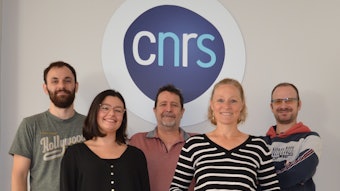
Read the full article in the March 2021 digital edition. . .
Aging is characterized by the accumulation of macromolecular damage, impaired tissue renewal and progressive loss of physiological integrity. Over the past decade, a growing number of studies also has revealed that progressive changes to epigenetic information have a major influence on the aging process. Lifestyle habits, diet, pollution and other environmental factors all impact the human life span by altering epigenetic information. Therefore, given the reversible nature of epigenetic mechanisms, these studies provide promising avenues for healthy aging.1
Epigenetics refers to heritable and reversible changes in gene expression that do not involve changes to the underlying DNA sequence. Among the epigenetic modulators are microRNAs (miRNAs), a class of short, endogenous, single-stranded, non-coding RNA molecules. By binding a specific sequence of the target messenger RNAs (mRNAs), the miRNA modulators can regulate the expression of multiple genes at the post-transcriptional level through the degradation or translational inhibition of the targeted transcripts, thereby decreasing protein synthesis.2 Furthermore, a single miRNA can target up to several hundred mRNAs, and one gene may be targeted by many different miRNAs. Thus, by modulating miRNA levels, formulators can significantly harmonize gene expression regulatory networks.
Numerous miRNAs have been described with important regulatory roles in the different hallmarks and processes of aging.3 More precisely in skin, miRNAs regulate cell senescence in both keratinocytes and fibroblasts;4 they are involved in the stress response in the extracellular matrix (ECM) with the loss of proteins such as collagen and elastin fibers;5 and they are involved in the pathogenesis of skin diseases such as atopic dermatitis and psoriasis.6 Therefore, miRNAs intervene in many of the pathways relevant to skin aging, modulating gene expression and changing the aspect of aged skin, and increasing its fragility and wrinkles, leading to drier skin.
However, well aging is not only about limiting or reversing the biological/genetic factors involved in the aging process. Other important components include maintaining high cognitive and physical function, together with engagement in life. There is a strong psychological component to a positive quality of life especially as people grow older, and emotions play an outstanding role. In relation, several studies have shown the benefits of applying cosmetic products, which generates good feelings and emotions in consumers. Based on these findings, companies are now supporting well aging by helping women to be, look and feel their best, both physically and emotionally.
This paper describes the development of an ingredienta for mature skin that takes a holistic physical and emotional approach to well aging. Based on an extract from monk fruit or Momordica grosvenorii, a gourd of the Cucurbitaceae family, the ingredient was first analyzed for anti-aging benefits in vitro and in vivo, then examined for emotional effects in mature women.
In vitro Methods
Prior to all experiments, an initial cytotoxicity assay was carried out with different concentrations of the activea to confirm its viability for aged fibroblasts.
miRNA profiling in aged fibroblasts: miRNA profiling analyses were carried out by microarray in normal aged dermal fibroblasts obtained from a 66-year-old woman, which were cultured in the absence or presence of the monk fruit-based active at 0.93% (i.e., 250 μg/mL). After 24 hr, fibroblasts were lysed and total RNA including miRNA was extractedb. Total RNA was evaluated by spectrometryc and bioanalysisd to assess the RNA integrity and presence of miRNA in the samples.
For the microarray analysis, 250 ng of total RNA were labelede and hybridized to chipsf to allow for the detection of approximately 2,000 human miRNAsg. Finally, fluorescence intensities were determined using a 3D gene scanner and analyzed using the R biostatistical software. Only the miRNAs that passed the normalization filter were considered, and the significance threshold was set at a fold-change (FC) of > 2.0 or < 0.5.
Bioinformatics analysis: To predict the target genes of the miRNA profile, a computational approximation tool was utilizedh; the database used only collects the target genes of miRNAs that have been experimentally validated.7 To predict the target genes when the number of experimentally validated target genes was limited, an algorithmj was used instead.
In parallel, a functional study was carried out to identify the molecular routes and pathways noted in the Kyoto Encyclopedia of Genes and Genomes (KEGG) and the Gene Ontology (GO) through softwarek.8 For this study, limits were set at a p value of 0.05 and a microT of 0.80, along with the correction of false discovery rate (FDR). The algorithm used in this analysis consisted of a one-tailed Fisher test.
Explant treatment and processing: Skin explants from an abdominoplasty of a Caucasian woman also were prepared. The explants were maintained in BEM culture mediumm at 37°C in a humid, 5% CO2 atmosphere. The active was diluted to a final concentration of 0.45% directly in the culture medium.
Explants were cultured for nine days and the culture medium was refreshed at days 2, 3, 6 and 8 either in the presence or absence of the monk fruit active. After nine days in culture, three explants for each treatment were collected and cut into two parts. Half was fixed in buffered formol solution and half was frozen at -80°C.
Histological processing: After fixation for 24 hr in buffered formol, the samples were dehydrated, impregnated in paraffin and embeddedn. Next, 5-μm thick sections were cut with a microtome and mounted on histological glass slideso. The frozen samples were cut into 7-μm thick sections using a cryostatp. Sections were then mounted on silanized glass slidesq.
Staining procedure and quantification: Based on the results of the bioinformatics analysis, two different stains were chosen and used on skin explant sections. Hyaluronic acid staining was carried out on paraffinized sections using a biotinylated hyaluronic acid binding protein (HABP)r HABP is indicative of the amount of hyaluronic acid in the skin. Decorin immunostaining was performed on frozen sections using monoclonal and anti-decorin antibodiess. Hyaluronic acid and decorin in histological sections were quantified by image processing softwaret.
. . .Read more in the March 2021 digital edition. . .
References
- Pal, S. and Tyler, J.K. (2016). Epigenetics and aging. Science Advances 2(7) e1600584.
- Thalyana, S.V. and Slack, F.J. (2012). MicroRNAs and their roles in aging. J Cell Sci 125 7-17.
- Ugalde, A.P., Español, Y. and C. López-Otín (2011). Micromanaging aging with miRNAs: New messages from the nuclear envelope. Nucleus 2(6) 549-555.
- Mancini, M., Lena, A. ... Candi, E., et al. (2014). MicroRNAs in human skin aging. Aging Res Rev 17 9-15.
- Edeleva, E. V., and Shcherbata, H. R. (2013). Stress-induced ECM alteration modulates cellular microRNAs that feedback to readjust the extracellular environment and cell behavior. Front Gen 4(305). https://pubmed.ncbi.nlm.nih.gov/24427166/
- Hawkes, J. E., Nguyen, G. H., Fujita, M., Florell, S. R., Callis Duffin, K., Krueger, G. G., and O’Connell, R. M. (2016). microRNAs in psoriasis. J Invest Dermatol 136(2) 365-371.
- Chou, C.H., Shrestha, S., Yang, C.D., Chang, N.W., Lin, Y.L., Liao, K.W. and Huang, H.D. (2018). miRTarBase update 2018: a resource for experimentally validated microRNA-target interactions. Nucleic Acids Res 46(D1) D296–D302. https://pubmed.ncbi.nlm.nih.gov/29126174/
- Vlachos, I. S., Zagganas, K., Paraskevopoulou, M. D., Georgakilas, G., Karagkouni, D., Vergoulis, T. and Hatzigeorgiou, A. G. (2015). DIANA-miRPath v3.0: Deciphering microRNA function with experimental support. Nucleic Acids Res 43(W1) W460–W466.
Captions/Footnotes:
aWonderage (INCI: Water (Aqua) (and) Propanediol (and) Glycerin (and) Cucurbitaceae Extract (and) Pentylene Glycol (and) Lactobacillus/Brassica Nigra Seed Ferment Extract (and) Lactococcus Ferment Extract) is a product of Provital.
b miRNeasy Mini Kit, Qiagen
c NanoDrop, Thermo Scientific
d 2100 Bioanalyzer, Agilent
ee 3D-Gene miRNA labeling kit and
f 3D-Gene human miRNA Oligo chips, version 21, are products of Toray Industries, Inc.
g miRBase Release 21
h miRTarBase v7.0
j DIANA microT-CDS
k DIANA-miRPath v3.0
m BIO-EC Explants Medium
n Leica EG 1160 embedding station
o Superfrost p Leica CM 3050 q Superfrost plus r HABP, Amsbio
s Santa Cruz Biotechnologies
t ImageJ/FIJI, NIH











!['We believe [Byome Derma] will redefine how products are tested, recommended and marketed, moving the industry away from intuition or influence, toward evidence-based personalization.' Pictured: Byome Labs Team](https://img.cosmeticsandtoiletries.com/mindful/allured/workspaces/default/uploads/2025/08/byome-labs-group-photo.AKivj2669s.jpg?auto=format%2Ccompress&crop=focalpoint&fit=crop&fp-x=0.49&fp-y=0.5&fp-z=1&h=191&q=70&w=340)